7 Herbal Teas For Stye
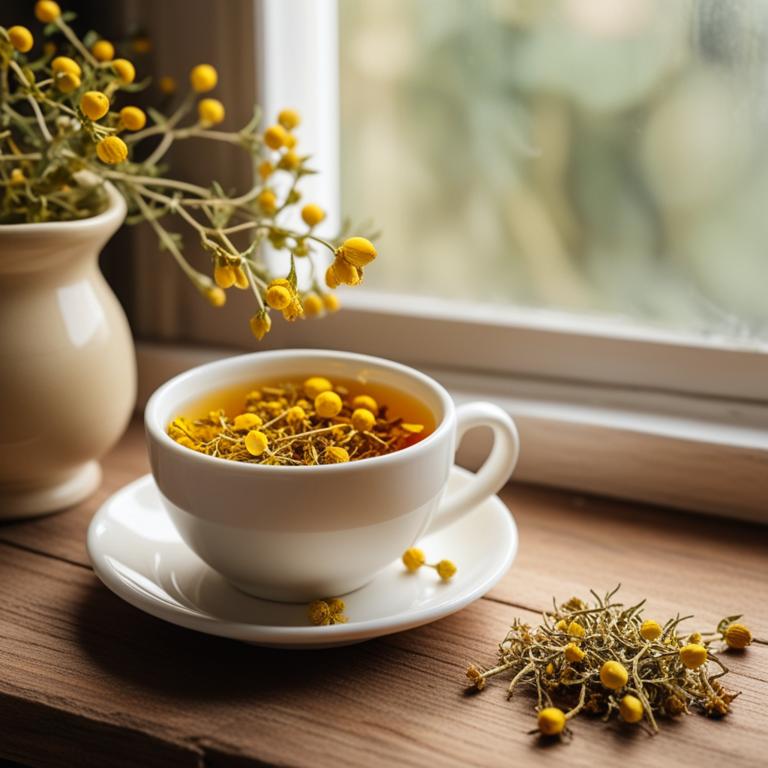
Herbal teas can help with styes, a painful and unsightly bump on the eyelid.
A stye is caused by a bacterial infection, and herbal teas can help fight this infection and reduce swelling. For example, Calendula officinalis tea has anti-inflammatory properties, which can help bring down the swelling and ease the pain. Echinacea purpurea tea is known for its immune-boosting properties, which can help fight off the bacterial infection that causes a stye. Urtica dioica tea, also known as nettle tea, has antiseptic properties, which can help prevent the infection from spreading and reduce the risk of scarring. Drinking these herbal teas can bring several benefits to your life. Not only can they help you get rid of a stye, but they can also help you prevent future infections.
By boosting your immune system with Echinacea purpurea tea, you can reduce your risk of getting sick and feeling under the weather. Calendula officinalis tea can also help soothe and calm irritated skin, which can be helpful if you have sensitive skin. Urtica dioica tea is also rich in vitamins and minerals, which can help support your overall health and wellbeing. When making herbal teas, it's best to steep the herbs in hot water for 5-10 minutes to allow the active ingredients to release. You can then strain the tea and drink it hot or cold, sweetened or unsweetened. Some people like to add a squeeze of lemon or a drizzle of honey to make the tea more palatable. You can also use herbal tea bags or loose-leaf herbs to make the tea.
Whatever method you choose, drinking herbal teas can be a simple and natural way to help manage a stye and support your overall health.
- 1. Calendula officinalis
- 2. Echinacea purpurea
- 3. Urtica dioica
- 4. Aloe barbadensis
- 5. Achillea millefolium
- 6. Plantago lanceolata
- 7. Hypericum perforatum
1. Calendula officinalis
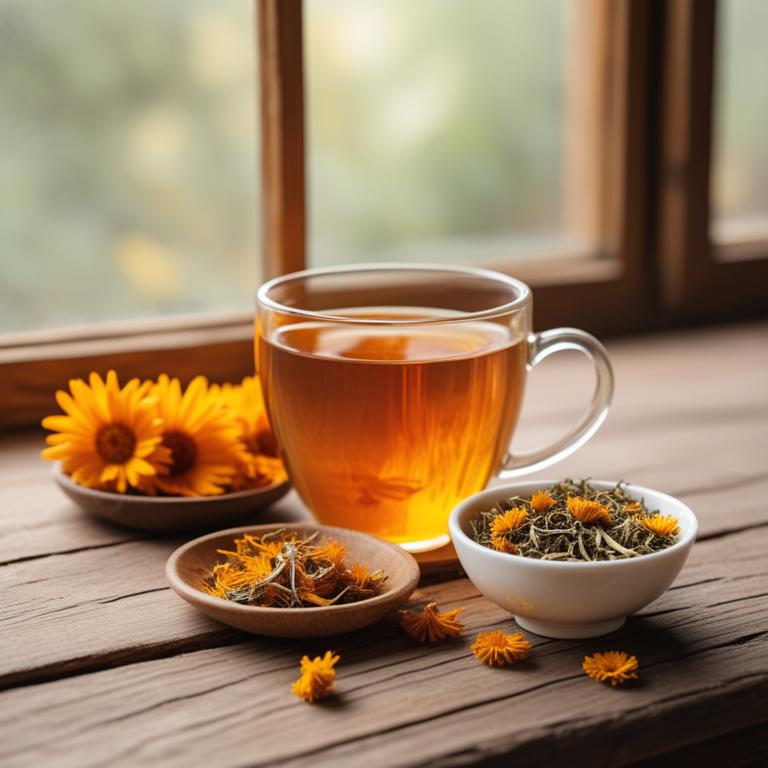
Calendula officinalis teas contains flavonoids, saponins, and triterpenoids, which are active constituents that make it effective in treating eye infections like sty.
These compounds have anti-inflammatory and antimicrobial properties that help reduce swelling and fight off bacterial infections that cause sty. The flavonoids, specifically quercetin and kaempferol, have been shown to have potent antioxidant and anti-inflammatory effects, which help to reduce redness and promote healing. The saponins in Calendula officinalis teas also have a soothing effect on the skin and mucous membranes, which helps to calm the irritation and discomfort associated with sty.
By reducing inflammation and fighting off infections, Calendula officinalis teas can help to clear up sty and promote healthy eye tissue.
- Gather 1 tablespoon of dried Calendula officinalis flowers.
- Add the dried flowers to 1 cup of boiling water.
- Reduce heat and let it simmer for 5-7 minutes.
- Strain the mixture into another cup and discard the flowers.
- Let the tea cool, then use it to bathe or apply it to the affected area to help soothe a stye.
2. Echinacea purpurea

Echinacea purpurea teas contains bioactive constituents like alkylamides, glycosides, and polyphenols.
These compounds have anti-inflammatory and antioxidant properties, which can help reduce swelling and fight off infections associated with stye. The glycosides in Echinacea purpurea teas, particularly echinacoside and caftaric acid, have been shown to inhibit the growth of bacteria and fungi that can cause stye. The polyphenols present in the tea, such as kaempferol and quercetin, have potent antioxidant properties that can help soothe and calm the affected area.
By reducing inflammation and fighting off infections, Echinacea purpurea teas can help alleviate the symptoms of stye and promote healing.
- Gather 2 teaspoons of dried Echinacea purpurea flowers and 1 cup of boiling water.
- Steep the Echinacea flowers in the boiling water for 5-7 minutes.
- Strain the mixture into a cup to remove the flowers.
- Add 1 tablespoon of honey to the tea, if desired, for sweetness.
- Drink the tea 2-3 times a day to help soothe a stye.
3. Urtica dioica
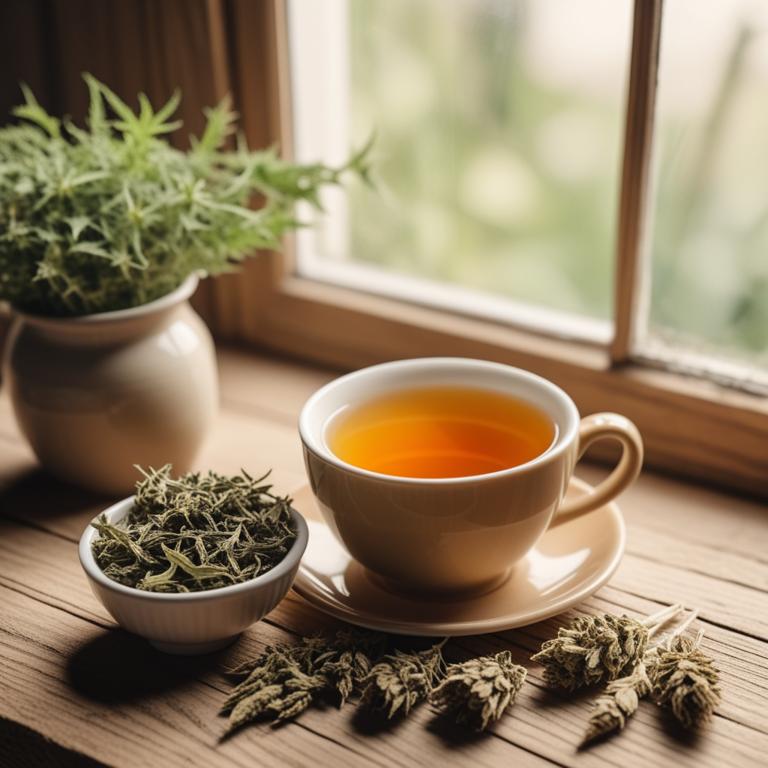
Urtica dioica teas contains bioactive constituents like flavonoids, phenolic acids, and saponins.
These compounds have anti-inflammatory and antimicrobial properties, which help reduce swelling and fight infection in the eye. The flavonoids in Urtica dioica tea, such as quercetin and kaempferol, have potent antioxidant effects that can help protect the eye from damage caused by free radicals. The antimicrobial properties of saponins in Urtica dioica tea can help combat bacterial and fungal infections that can cause sty.
By reducing inflammation and fighting infection, Urtica dioica tea may help alleviate symptoms associated with sty.
- Gather 1 cup of fresh Urtica dioica leaves and stems.
- Chop the leaves and stems into small pieces and place them in a clean glass jar.
- Add 1 cup of boiling water to the jar and let it steep for 5-10 minutes.
- Strain the liquid and discard the solids. You can also add honey to taste.
- Drink 1 cup of the tea 3-4 times a day for up to 1 week to help reduce the swelling of a stye.
4. Aloe barbadensis
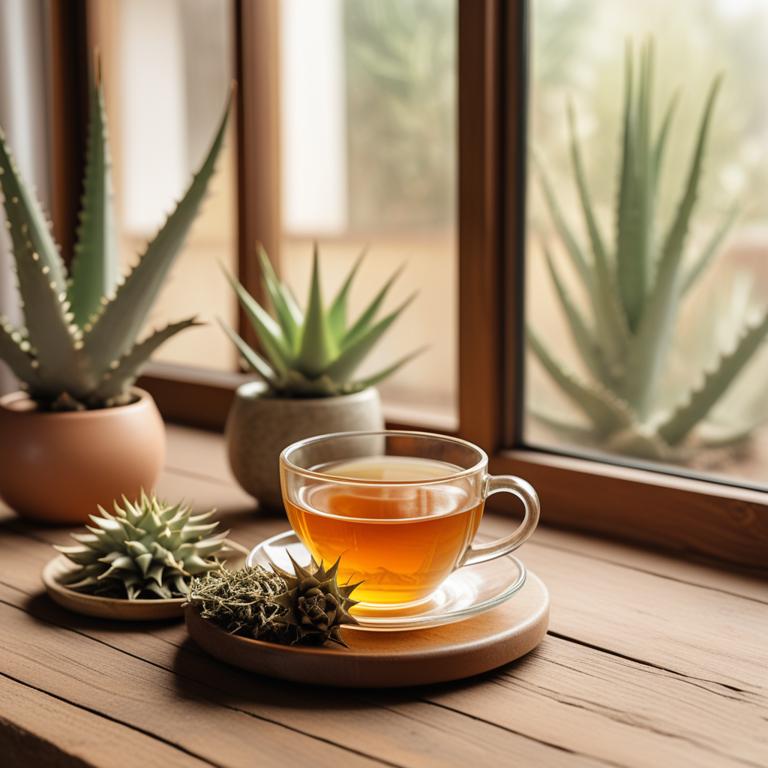
Aloe barbadensis teas contains several bioactive constituents, including aloin, aloe-emodin, and acemannan.
These compounds have anti-inflammatory and antibacterial properties, which help to reduce the swelling and infection associated with a stye. Aloe-emodin, in particular, has been shown to inhibit the growth of bacteria that can cause infections, while acemannan stimulates the immune system to fight off the infection. The anti-inflammatory properties of aloin and aloe-emodin help to reduce the pain and discomfort associated with a stye, making it easier to manage the condition.
By reducing inflammation and inhibiting bacterial growth, Aloe barbadensis teas can help to alleviate the symptoms of a stye and promote healing.
- Get 1 cup of water and boil it in a pot.
- Take 2-3 tablespoons of Aloe barbadensis gel and add it to the boiling water.
- Reduce heat and let it simmer for 5-7 minutes.
- Strain the liquid into a cup and discard the solids.
- Drink the tea 2-3 times a day to help soothe and heal a stye.
5. Achillea millefolium
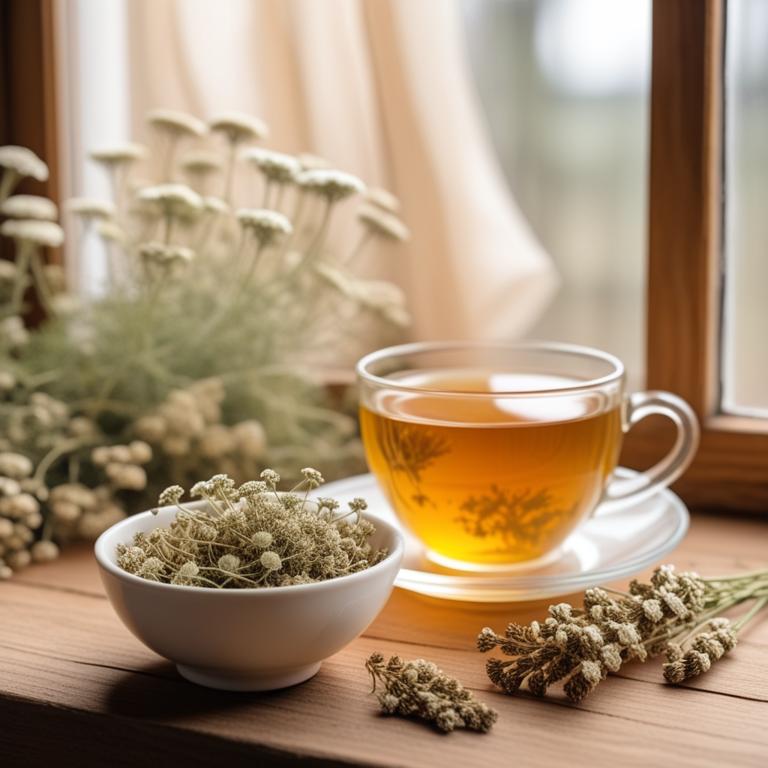
Achillea millefolium teas contains bioactive constituents like sesquiterpene lactones and flavonoids.
These compounds have anti-inflammatory and antimicrobial properties that can help reduce swelling and fight infections in the eye. The tea's antioxidant properties, largely attributed to its flavonoid content, can help protect the eye from damage caused by free radicals. The anti-inflammatory properties of sesquiterpene lactones can help soothe and calm irritated tissues, reducing the redness and discomfort associated with stye.
By reducing inflammation and fighting infection, Achillea millefolium tea may help promote healing and alleviate symptoms of stye.
- Gather 1 cup of fresh Achillea millefolium leaves and flowers.
- Measure 1 tablespoon of dried Achillea millefolium leaves and flowers or use 2 cups of fresh leaves and flowers.
- Combine the measured leaves and flowers with 1 cup of boiling water in a heat-resistant cup.
- Let it steep for 5-7 minutes, then strain the tea into another cup.
- Drink the tea 2-3 times a day to help reduce the swelling of a sty.
6. Plantago lanceolata
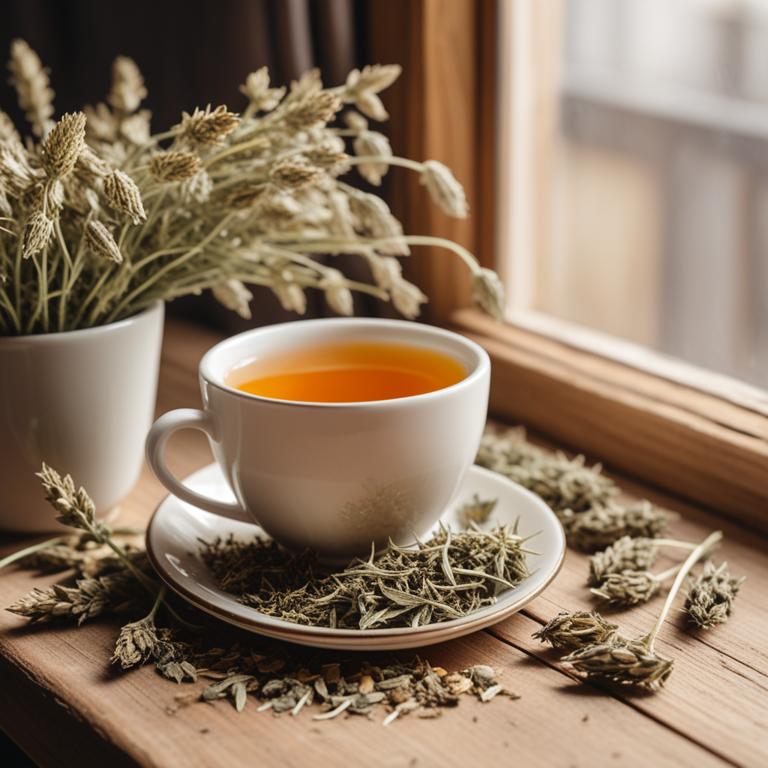
Plantago lanceolata teas contains flavonoids, alkaloids, and phenolic acids, which are known to have anti-inflammatory and antimicrobial properties.
Flavonoids like aucubin and caffeic acid help reduce swelling and inflammation, making it easier for the stye to heal. The antimicrobial properties of phenolic acids like ferulic acid and sinapic acid prevent bacterial infections from getting worse and promoting the healing process. The alkaloids present in Plantago lanceolata tea, such as aucubin and plantagine, have antiseptic properties that help to reduce the risk of infection.
By reducing inflammation and preventing bacterial growth, Plantago lanceolata tea can help to alleviate the symptoms of a stye.
- Gather 1 cup of fresh Plantago lanceolata leaves and flowers.
- Chop the leaves and flowers into small pieces.
- Measure 1 teaspoon of chopped Plantago lanceolata per cup of boiling water.
- Steep the Plantago lanceolata in boiling water for 5-7 minutes.
- Strain the liquid and let it cool before using it as an eye wash to treat stye.
7. Hypericum perforatum

Hypericum perforatum teas contains flavonoids, particularly rutin and quercetin, which have anti-inflammatory properties that help to reduce swelling and redness associated with stye.
The tea also contains tannins, which have antimicrobial properties that can help to fight off infections that cause stye. Flavonoids like kaempferol and isorhapontigenin in Hypericum perforatum tea have anti-edematous effects, which can help to reduce fluid accumulation and alleviate stye symptoms. The tea's high water content and anti-inflammatory properties can also help to soothe and calm irritated skin around the stye.
By reducing inflammation and fighting off infections, Hypericum perforatum teas can help to alleviate stye symptoms and promote healing.
- Gather 1 cup of fresh Hypericum perforatum flowers and leaves.
- Dry the Hypericum perforatum flowers and leaves in a warm, dark place.
- Use 1 tablespoon of dried Hypericum perforatum flowers and leaves for every cup of boiling water.
- Steep the dried Hypericum perforatum in boiling water for 5-7 minutes.
- Strain the tea and drink 2-3 cups a day for stye relief.